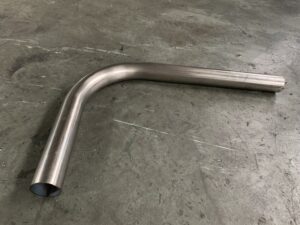What Are Hydraulic Pipe Benders? The Ultimate Guide
Introduction to Pipe Benders
When it comes to bending pipes with precision and efficiency, hydraulic pipe benders are among the most powerful and reliable tools available. These machines use hydraulic pressure to shape metal pipes and tubes into desired angles without compromising their structural integrity. We’ll also look at a case study showcasing their effectiveness in a large-scale construction project.

How Hydraulic Pipe Benders Work
The Mechanics Behind Hydraulic Pipe Bending
Hydraulic pipe benders operate by using a high-pressure hydraulic system to apply force to a bending die, which shapes the pipe around a specific form. The process involves:
- Clamping the Pipe: The pipe is secured in place to prevent movement during bending.
- Applying Hydraulic Pressure: A hydraulic cylinder or ram exerts force, pushing the pipe against the die.
- Forming the Bend: The pipe conforms to the curvature of the die, maintaining a smooth, crease-free bend.
Because hydraulic systems generate consistent pressure, they deliver high precision and repeatability, making them ideal for industrial applications.
Types of Pipe Benders
While hydraulic models dominate heavy-duty bending tasks, several pipe bender variants exist:
1. Manual Pipe Benders
- Operated by hand leverage
- Suitable for light-duty tasks (e.g., plumbing or DIY projects)
- Limited to smaller pipe diameters
2. Electric Pipe Benders
- Faster than manual benders but less powerful than hydraulic ones
- Commonly used for medium-duty applications
3. CNC Hydraulic Pipe Benders
- Computer-controlled for maximum precision
- Used in automotive and aerospace manufacturing
- Capable of complex multi-angle bends
Hydraulic pipe bending stand out due to their balance of power, affordability, and durability.
Advantages of Hydraulic Pipe Benders
- Strong Bending Capacity: Handles thick-walled and large-diameter pipes.
- High Precision: Minimizes material waste.
- Efficiency: Faster than manual bending.
- Versatility: Works with steel, copper, aluminum, and more.
- Durability: Long-lasting performance in rugged environments.
Real-World Application: Industrial Pipe Bending Case Study
Project: Oil & Gas Pipeline Installation
A construction firm was tasked with installing a large-scale pipeline system for an offshore oil rig. The pipes required multiple tight-radius bends to navigate around structural supports.
Challenges:
- Strict tolerances (±1° angle accuracy)
- High-pressure pipe ratings (API 5L X65 steel)
- Tight deadlines
Solution: A CNC hydraulic pipe bender was selected for its ability to:
- Produce repeatable bends with minimal error
- Handle the high-strength steel
- Complete the job 30% faster than manual alternatives
Result: The project was completed on time without material waste, emphasizing why hydraulic pipe benders are indispensable in industrial settings.
Choosing the Right Hydraulic Pipe Bender
When selecting a pipe bender, consider:
- Pipe Material & Diameter: Ensure machine compatibility.
- Bend Radius: Some jobs require tighter angles.
- Power Source: Electric, manual, or hydraulic.
- Budget: Hydraulic models vary from affordable to high-end industrial units.
Finally
Hydraulic pipe bending are essential tools for anyone working with metal tubing—whether in construction, manufacturing, or repairs. Their combination of power, efficiency, and accuracy makes them superior to manual and electric alternatives for demanding tasks.
By understanding their mechanics, advantages, and real-world applications, professionals can make informed decisions when investing in bending equipment.
Are you using a hydraulic pipe bender in your industry? Share your experience in the comments!
For more information, please click here




